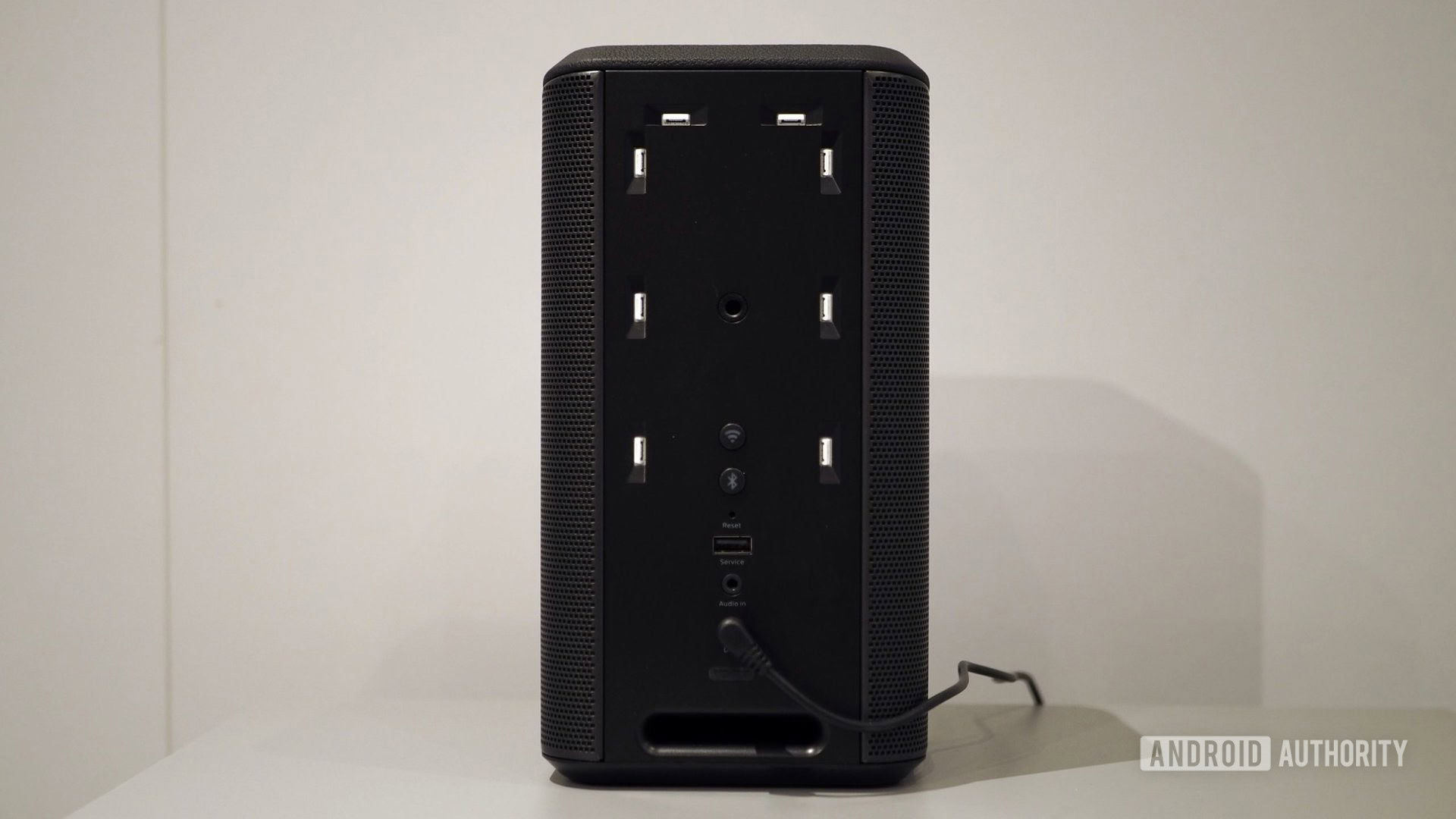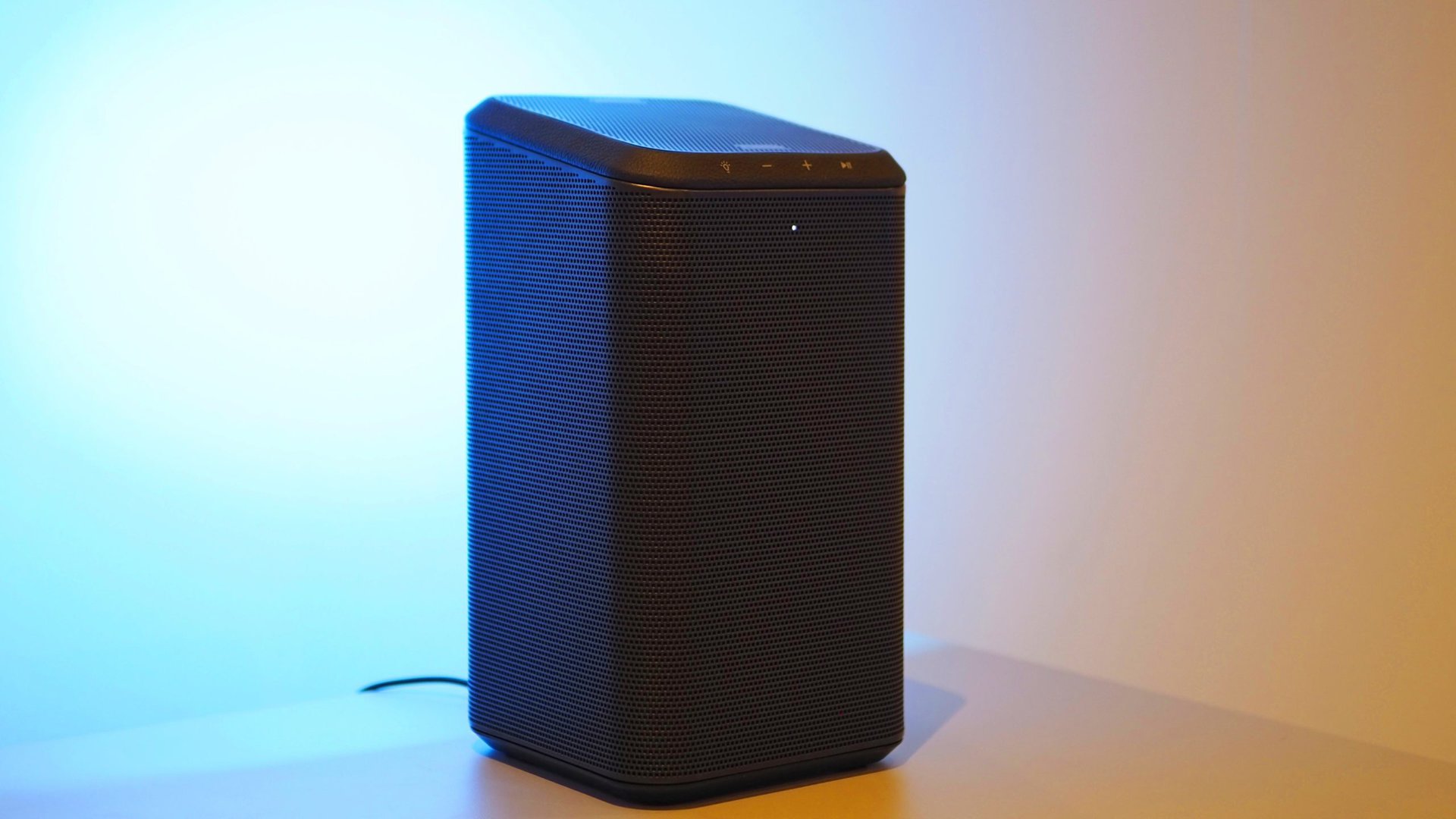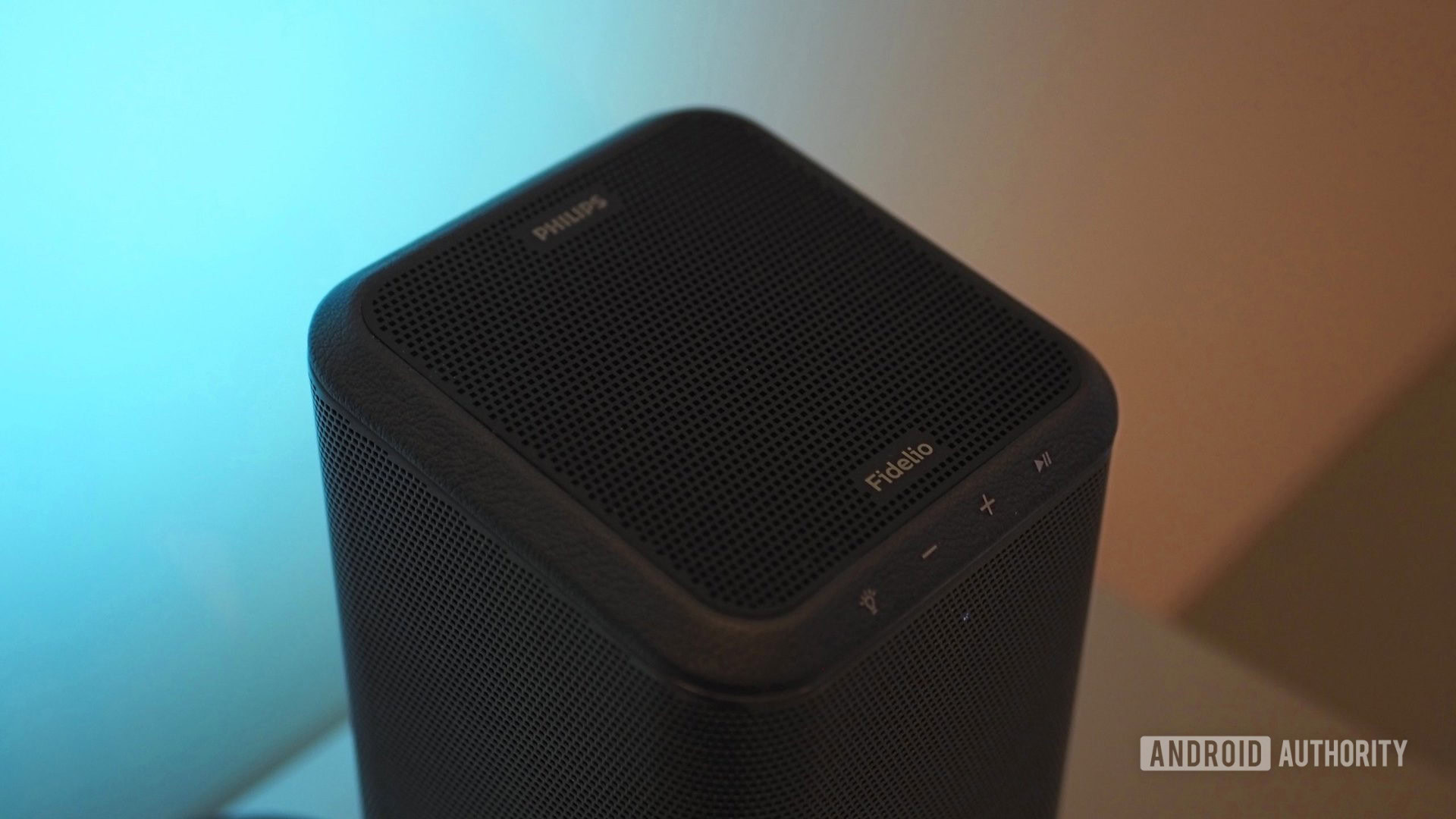Affiliate links on Android Authority may earn us a commission. Learn more.
Philips' new bookshelf speakers kind of act like Hue Play lights too
September 10, 2022

There aren’t enough wall plugs to handle everything we keep installing around our TVs nowadays. It was all good when we just had to plug in the television then we added the cable box, soundbar and/or speakers, various set-top boxes, gaming consoles, and we’ve finished it off with ambient lights. But not everyone needs the most extensive and complicated setup. Sometimes, you just want a simple product that ticks several boxes, and this is what the new Philips Fidelio FS1 speaker does.
Skipping the technical details for a bit, the FS1 is a bookshelf speaker with LED lighting on the back that integrates with Philips’ Ambilight TVs to create an ambient light experience around your content. It’s almost as if you had installed a pair of invisible Hue Play light bars too.

Clearly, this isn’t the same thing as a proper Hue Play experience, though. The LED lights are weak and there are only eight of them. They can be controlled with a button on the speaker (multiple modes and brightness levels), but they aren’t voice-activated and can’t be integrated into a smart home setup.
The FS1 creates an ambient light experience without extra cables, time-consuming setups, or fuss.
They do, however, work with Philips’ Ambilight TV series without much fuss. You simply link them to the TV then follow the UI prompts to integrate them with both your sound and light setups, even choosing where exactly the speaker is placed in relation to the TV. Keeping the speakers next to the TV will obviously result in different light effects than if they were facing it.
It’s a simple idea, but one that works really well in reality. Two speakers on each side of the TV can provide excellent, immersive sound plus ambient lighting that follows anything on the TV without messing with hubs, apps, HDMI cables, or cameras pointed at your screen. For people who just want to modernize their entertainment setup without spending extra time or money on standalone lighting gear, the Fidelio FS1 gets the job done — so long as you have a Philips Ambilight TV.
It's an easy way to modernize your living room and hide extra lights in functional speakers.
You’d be forgiven if you were thinking that this really should have been a proper Philips Hue Play light. But this Philips is different from that Philips. See, the brand name is now managed by separate companies: TP Vision is handling the video and audio line-up, while Signify is the one behind the Hue and Wiz lighting products. I wouldn’t hold my breath on a collaboration between the two.

Going back to the FS1, it’s an unassuming but very versatile speaker. It packs a 1-inch front-facing tweeter, a top-mounted 2.5-inch driver, a bottom-firing 3.5-inch woofer (with two passive radiators), and adapts to various setups. It can be used as a standalone mono speaker or as part of a stereo setup when you pair a second FS1 unit. It can also work as a satellite speaker for a Dolby Atmos setup or transform into the left and right channels of an Ambilight TV.
Beyond the glitz, this is a powerful and versatile bookshelf speaker.
And because Bluetooth 5.0 would barely do its powerful 60W sound any justice, there’s also Chromecast built-in, Spotify Connect, Apple Airplay 2, and high-resolution DTS Play-Fi multi-room support. Plus, it plays nice with Google Assistant, Apple Siri, and Amazon Alexa.

Our demo with the FS1 was really short, so we weren’t able to gauge its sound quality as a standalone speaker. We can say, though, that if you set it up with the rest of the Fidelio range — FB1 soundbar and FW1 subwoofer — in a 7.2.4 configuration, you might risk blowing the roof off your house. The sound is one of the crispest I’ve personally heard and the instrument separation is outstanding.
A single Philips Fidelio FS1 speaker costs a hefty €349 and is already available at a few small retailers across Europe. We expect it to show up at Amazon in the EU at some point. Unfortunately, we don’t know when or if it’ll come to the US.